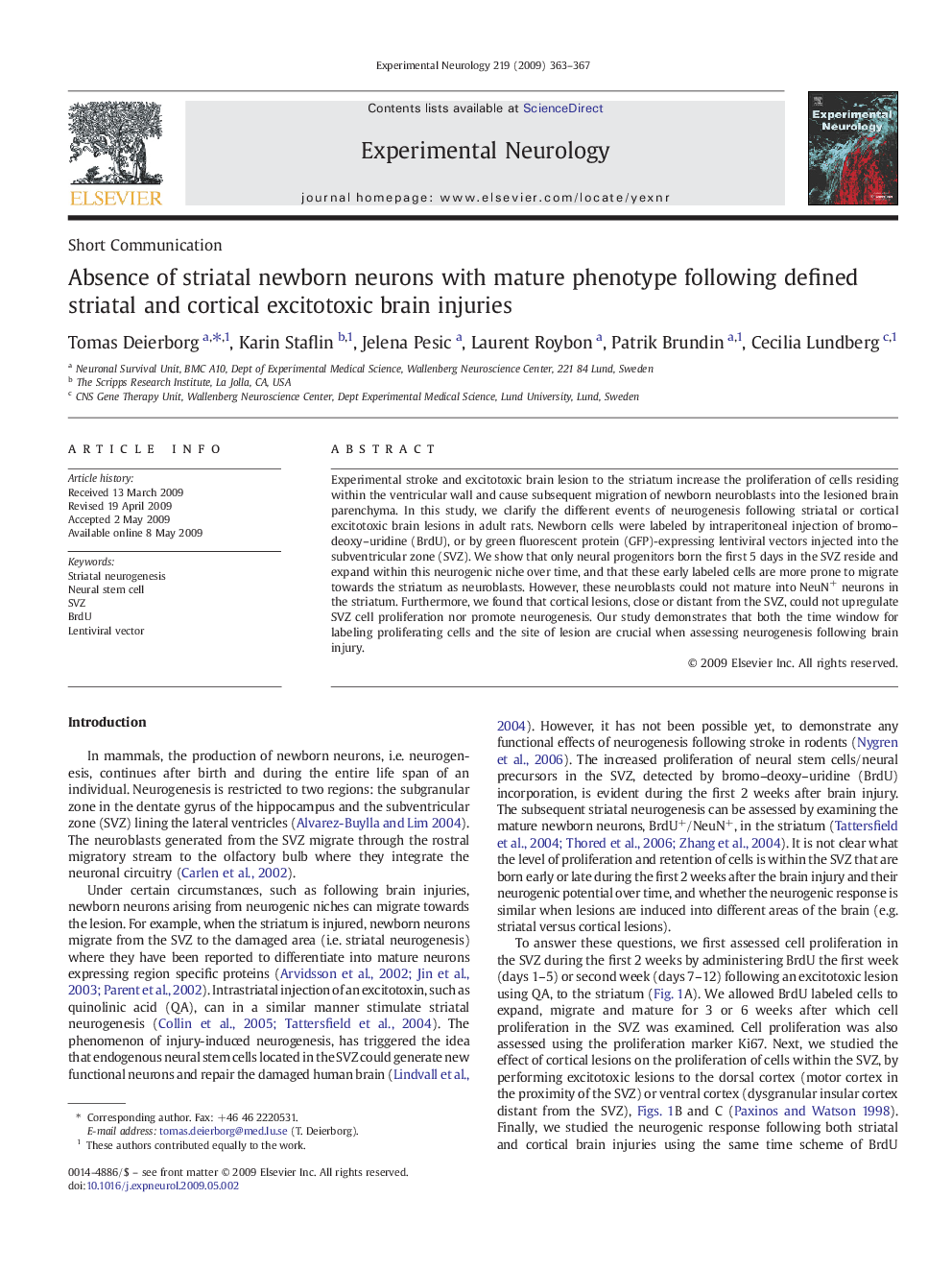| Article ID | Journal | Published Year | Pages | File Type |
|---|---|---|---|---|
| 3056315 | Experimental Neurology | 2009 | 5 Pages |
Experimental stroke and excitotoxic brain lesion to the striatum increase the proliferation of cells residing within the ventricular wall and cause subsequent migration of newborn neuroblasts into the lesioned brain parenchyma. In this study, we clarify the different events of neurogenesis following striatal or cortical excitotoxic brain lesions in adult rats. Newborn cells were labeled by intraperitoneal injection of bromo–deoxy–uridine (BrdU), or by green fluorescent protein (GFP)-expressing lentiviral vectors injected into the subventricular zone (SVZ). We show that only neural progenitors born the first 5 days in the SVZ reside and expand within this neurogenic niche over time, and that these early labeled cells are more prone to migrate towards the striatum as neuroblasts. However, these neuroblasts could not mature into NeuN+ neurons in the striatum. Furthermore, we found that cortical lesions, close or distant from the SVZ, could not upregulate SVZ cell proliferation nor promote neurogenesis. Our study demonstrates that both the time window for labeling proliferating cells and the site of lesion are crucial when assessing neurogenesis following brain injury.
